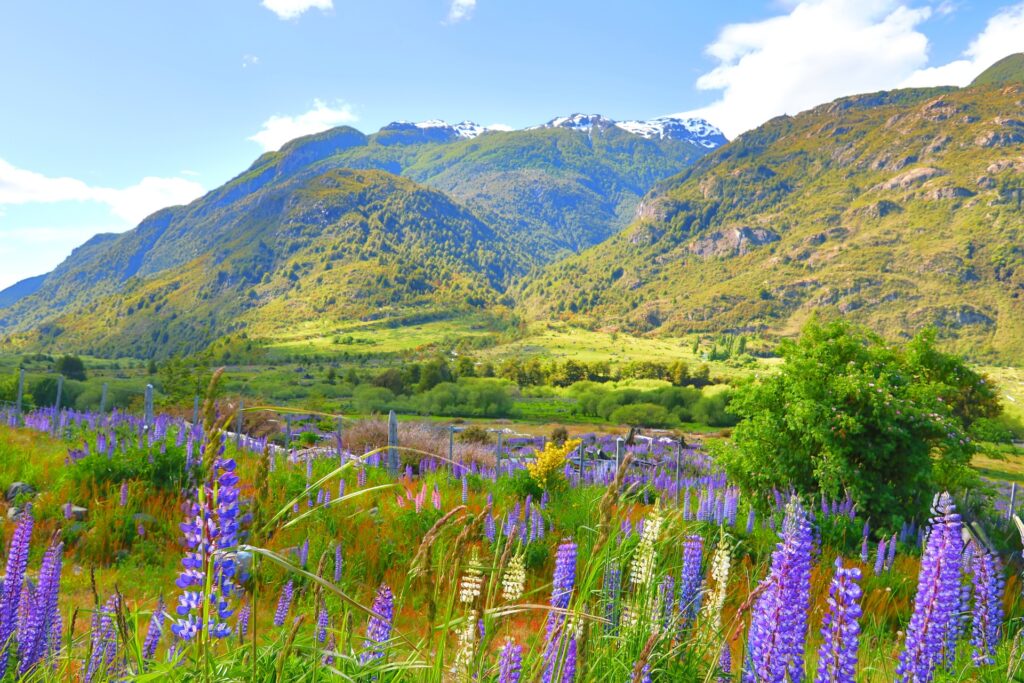
The best product : AVANT SKINCARE 😎
Patagonia, the southernmost tip of South America, is a paradise for nature lovers. Stretching across Argentina and Chile, it offers a unique blend of vast plains, towering mountains, and stunning coastlines. However, what truly sets Patagonia apart is its diverse and fascinating flora and fauna. From rare orchids to playful sea lions, the region is home to a myriad of species that captivate and inspire. In this guide, we’ll delve into the captivating world of Patagonia’s fauna and flora, offering a glimpse into the awe-inspiring biodiversity that awaits the intrepid traveler.
One of the most thrilling sights in Patagonian waters is the spectacle of whales and dolphins in their natural habitat. Particularly in the Valdes Peninsula, Southern Right Whales can be seen breaching and tail-slapping, creating an unforgettable spectacle. Dolphins, such as the Commerson’s Dolphin with its distinctive black and white pattern, are also frequently sighted.
Patagonia’s skies are ruled by an array of impressive birds of prey. The Andean Condor, one of the world’s largest flying birds, can often be seen soaring above the mountain ranges. Their enormous wingspan, reaching up to 3.3 meters, is a sight to behold. The Magellanic Horned Owl, another impressive predator, is known for its piercing eyes and distinctive tufted ears.
The guanaco, a camelid native to South America, is a common sight in the Patagonian steppe. These graceful creatures, related to llamas, roam the open plains in large herds, feeding on the sparse vegetation. Despite their calm demeanor, they are known to spit when threatened!
Patagonia’s flora is as diverse as its fauna, with a wide range of plants adapted to the region’s challenging climate.
The forests of Patagonia are dominated by two types of trees: the Southern Beech and the Patagonian Cypress. These hardy species have adapted to the harsh conditions, with the ability to withstand strong winds, cold temperatures, and poor soils. Their resilience adds a distinct character to the Patagonian landscape.
The wildflower season in Patagonia is a riot of colors. From the bright yellow blossoms of the Amancay, to the delicate white flowers of the Snowdrop Bush, the region is awash with color from spring through summer. The Patagonian Orchid, with its pink and white petals, is a particular favorite among botanists and photographers alike.
Beyond the land and skies, Patagonia’s waters teem with a rich diversity of marine life that is simply breathtaking.
Patagonian coastlines are often dotted with colonies of sea lions and seals. The South American Sea Lion, recognizable by its large size and mane, is a common sight. You may also encounter the smaller, more elusive Fur Seals basking on rocky outcrops. Their playful antics in the water are a joy to watch.
No visit to Patagonia would be complete without witnessing the region’s most iconic inhabitants – penguins. Magellanic Penguins, named after the explorer Ferdinand Magellan who first documented them, nest on the shores in large colonies. The sight of these charming birds waddling along the beaches or diving into the surf is truly heartwarming.
The Orca, or Killer Whale, is another magnificent creature that calls the Patagonian waters home. Known for their intelligence and hunting prowess, they offer a thrilling spectacle as they breach the surface, showcasing their distinctive black and white markings.
Away from the forests and coasts, the Patagonian steppe presents a different array of plant life, adapted to survive in this arid and windy environment.
These low-growing plants form dense, cushion-like mounds to resist the strong Patagonian winds. They bloom in a variety of colors, from the pink Moss Campion to the yellow Bitterroot, carpeting the steppe in vibrant hues during the flowering season.
The steppe is dominated by tufts of hardy grasses and shrubs such as the Coirón and the Mata Negra. These plants have evolved to withstand drought and grazing, and while they may appear unassuming, they play a crucial role in the ecosystem by preventing soil erosion and providing food for herbivores.
Patagonia’s myriad of life forms, from its majestic whales to its hardy cushion plants, is a testament to the power and beauty of evolution. This natural haven offers an unmatched opportunity to observe and appreciate the richness of our planet’s biodiversity. To immerse oneself in the fauna and flora of Patagonia is to step into a world that has been shaped by the forces of nature over millions of years, a world that continues to evolve and adapt in the face of our changing climate. It’s a humbling and inspiring experience that leaves a lasting impression and a deep respect for the wonders of the natural world.
So, pack your binoculars, lace up your hiking boots, and prepare for an unforgettable journey into the heart of Patagonia’s breathtaking biodiversity. No matter what draws you to this corner of the earth, be it the thrill of whale watching, the joy of bird spotting, or the serenity of walking amongst ancient trees, Patagonia promises an adventure that will touch your heart and stir your soul.